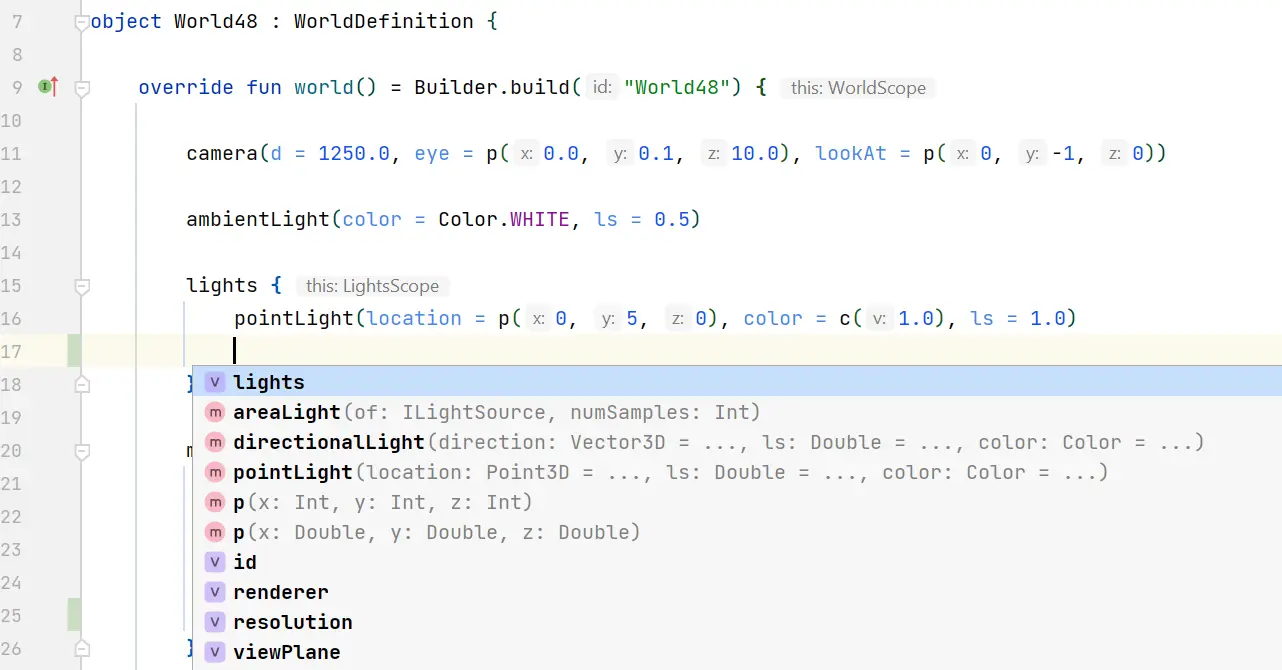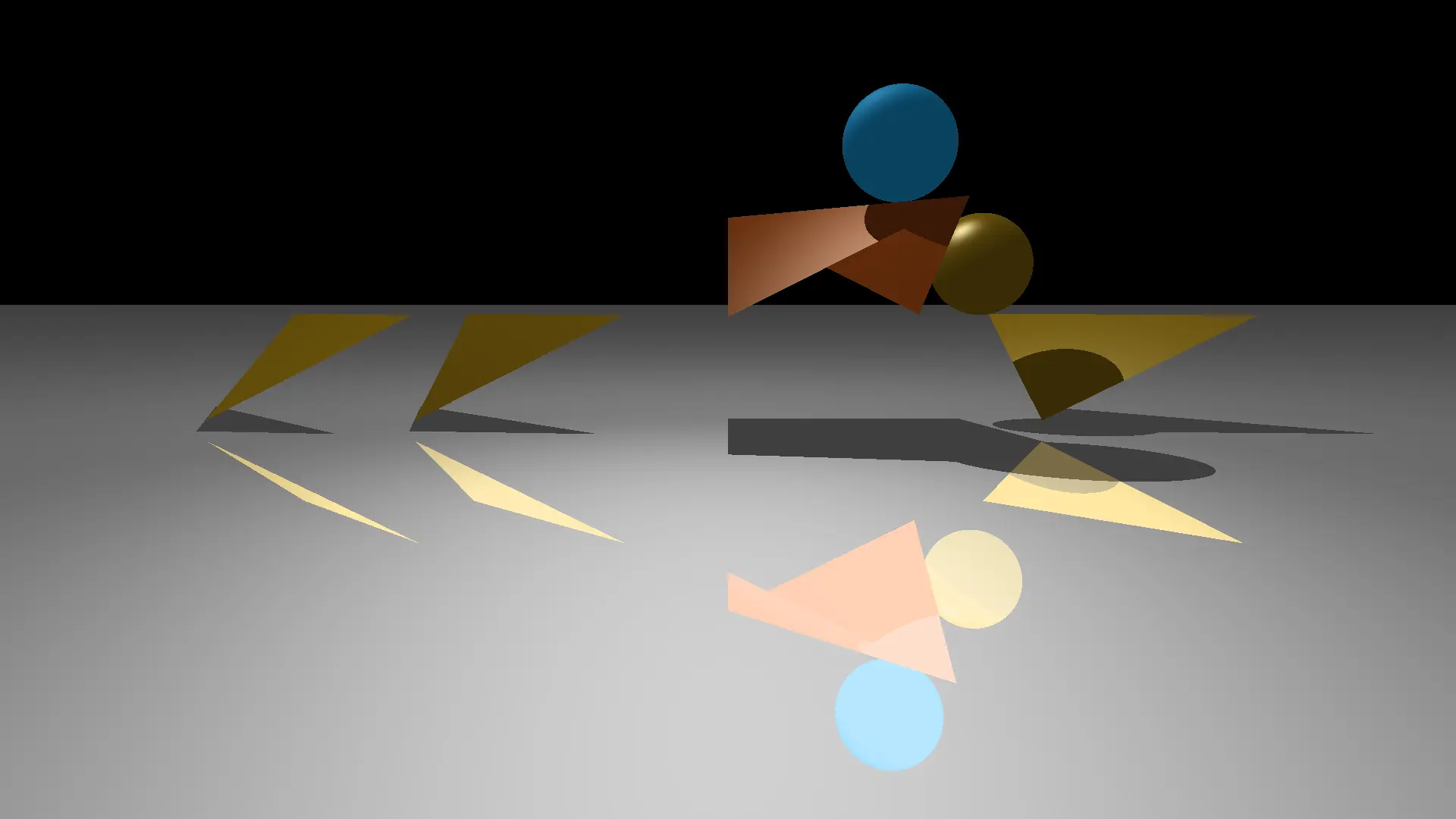Migrating a ray tracer from Java and Groovy to Kotlin (part 3)
May 25, 2019
I continued to work on migrating my ray tracer to Kotlin. Now the scenes can be specified with a Kotlin DSL and all Groovy code is gone.
Good bye Groovy. I implemented the scene description DSL in Kotlin and removed all Groovy code. There are still a lot of examples written in the Groovy DSL in the repository, because I migrated only a small number of them.
Now a scene DSL is statically typed and IntelliJ IDEA provides syntax completion.
See the following code snippet for an example.
package net.dinkla.raytracer.examples
import net.dinkla.raytracer.colors.Color
import net.dinkla.raytracer.world.Builder
import net.dinkla.raytracer.world.WorldDefinition
object World48 : WorldDefinition {
override fun world() = Builder.build("World48") {
camera(d = 1250.0, eye = p(0.0, 0.1, 10.0), lookAt = p(0, -1, 0))
ambientLight(color = Color.WHITE, ls = 0.5)
lights {
pointLight(location = p(0, 5, 0), color = c(1.0), ls = 1.0)
}
materials {
phong(id = "sky", cd = c(0.1, 0.7, 1.0), ka = 0.75, kd = 1.0)
reflective(id = "white", ks = 0.7, cd = c(1.0, 1.0, 1.0), ka = 0.5, kd = 0.75, exp = 2.0)
phong(id = "red", ks = 0.9, cd = c(0.9, 0.4, 0.1), ka = 0.5, kd = 0.75, exp = 10.0)
phong(id = "orange", ks = 0.9, cd = c(0.9, 0.7, 0.1), ka = 0.5, kd = 0.75, exp = 10.0)
}
objects {
plane(point = p(0.0,-1.1,0.0), normal = n(0, 1, 0), material = "white")
ply(material = "red", fileName = "resources/TwoTriangles.ply")
sphere(center = p(2.5, 0.5, 0.5), radius = 0.5, material = "orange")
sphere(center = p(1.5, 1.5, 1.5), radius = 0.5, material = "sky")
triangle(a = p(-5, 0, -1), b = p(-5, -1, 1), c = p(-3, 0, 1), material = "orange", smooth = true)
triangle(a = p(-3, 0, -1), b = p(-3, -1, 1), c = p(-1, 0, 1), material = "orange")
triangle(a = p(3, 0, -1), b = p(3, -1, 1), c = p(5, 0, 1), material = "orange")
}
}
}
Rendering this looks like this:

